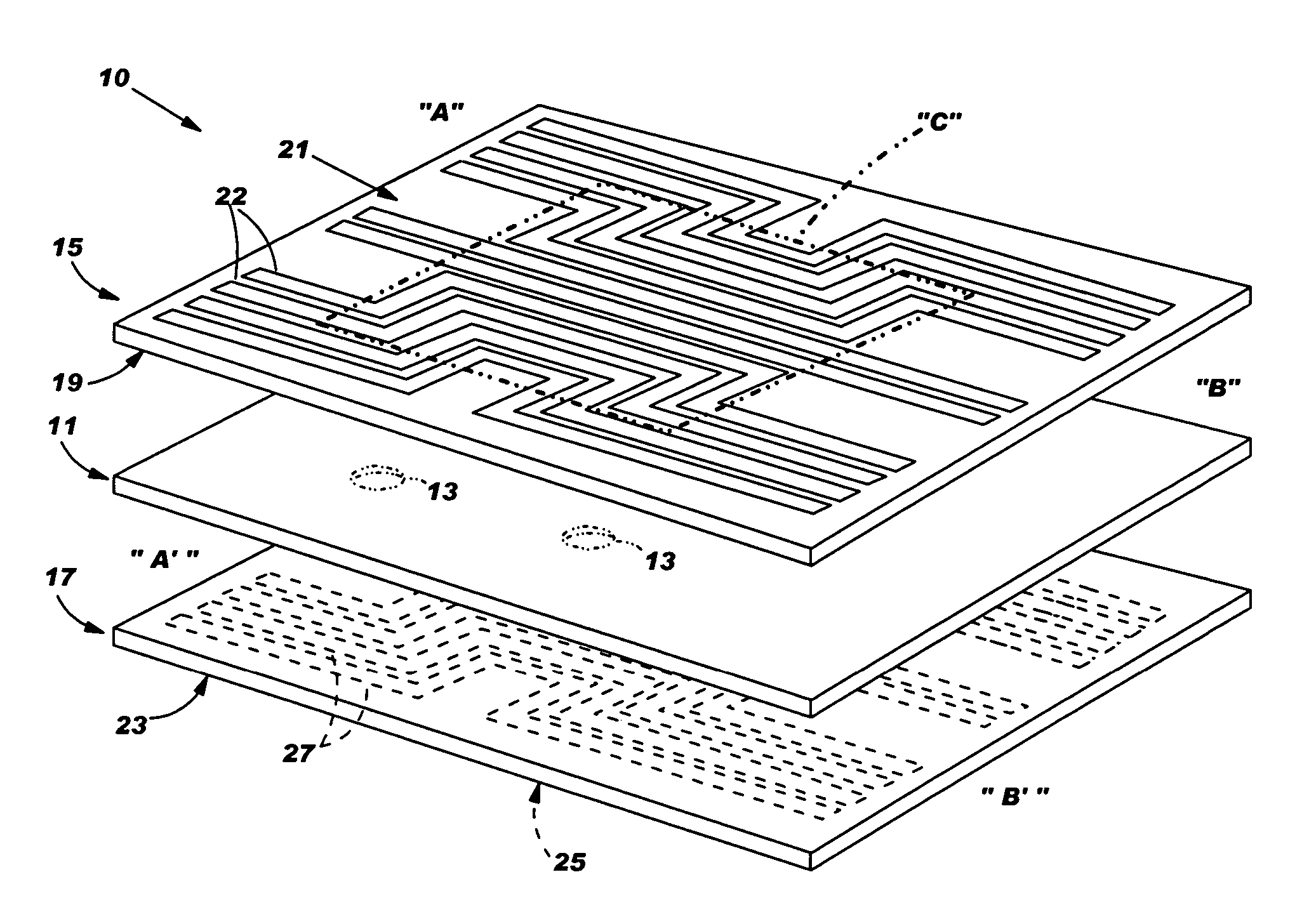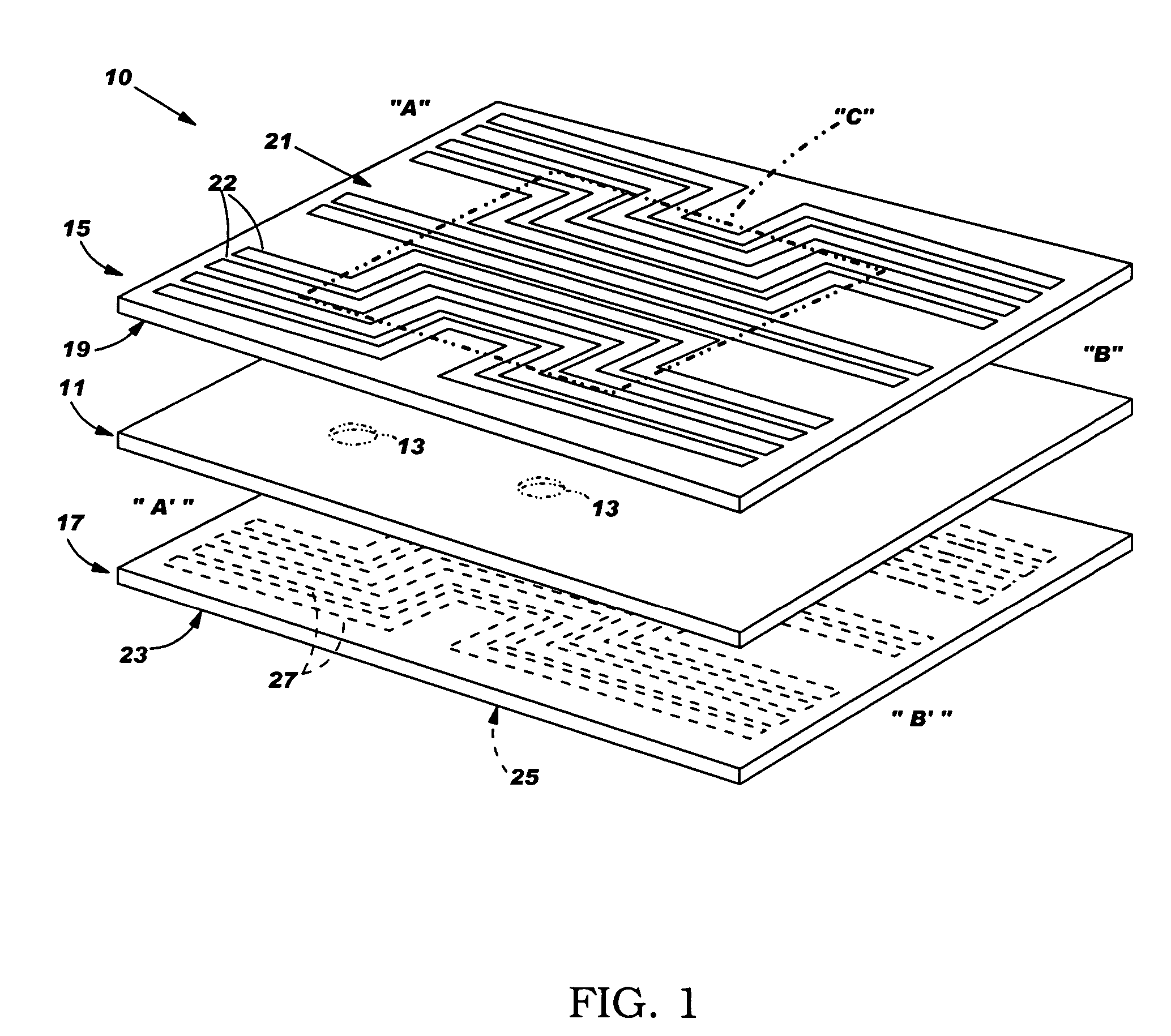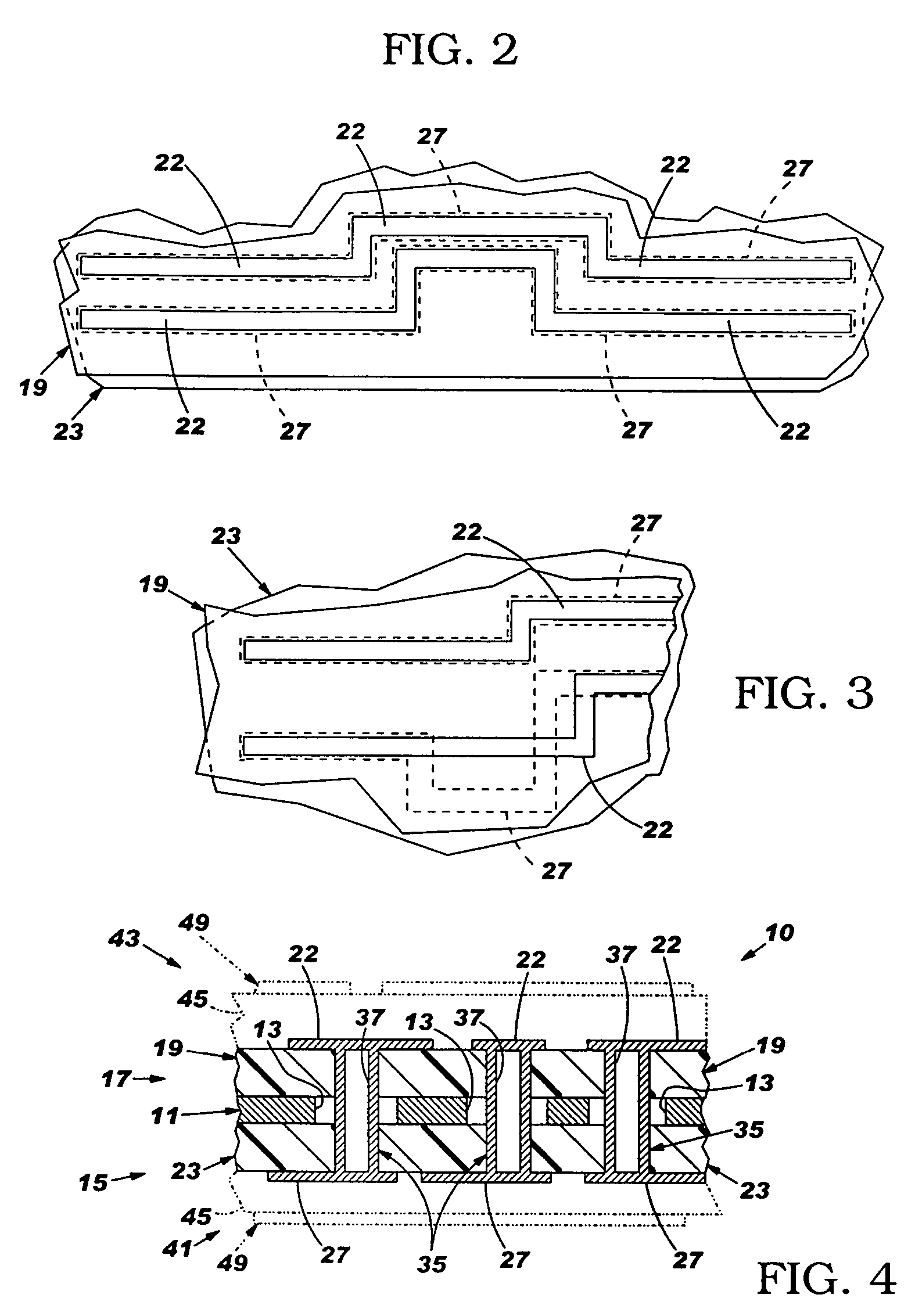Printed circuit board with low cross-talk noise
a printed circuit board and low cross-talk technology, applied in the direction of conductive pattern formation, association of printed circuit non-printed electric components, electrical apparatus construction details, etc., can solve the problems of reducing noise margins, affecting signal quality, and compromising signal integrity, so as to achieve low cross-talk, high density wiring patterns, and effective operation
- Summary
- Abstract
- Description
- Claims
- Application Information
AI Technical Summary
Benefits of technology
Problems solved by technology
Method used
Image
Examples
Embodiment Construction
[0027]For a better understanding of the present invention, together with other and further objects, advantages and capabilities thereof, reference is made to the following disclosure and appended claims in connection with the above-described drawings. It is understood that like numerals will be used to indicate like elements from FIG. to FIG.
[0028]In FIG. 1, there is shown a printed circuit board (PCB) 10 according to one aspect of the invention. As will be understood from the following description, the resulting structure as defined herein is a PCB with requirements for predominantly singular direction wiring with a reduced number of signal layers having at least equivalent electrical performance to PCBs of the known art, including those of more complex construction. The structure as defined herein allows for internal connections (e.g., internal or “buried” vias to connect adjacent signal layers through the interim power plane) if the structure is to form part of a larger, multilay...
PUM
| Property | Measurement | Unit |
|---|---|---|
| thickness | aaaaa | aaaaa |
| pressures | aaaaa | aaaaa |
| temperature | aaaaa | aaaaa |
Abstract
Description
Claims
Application Information
 Login to View More
Login to View More - R&D
- Intellectual Property
- Life Sciences
- Materials
- Tech Scout
- Unparalleled Data Quality
- Higher Quality Content
- 60% Fewer Hallucinations
Browse by: Latest US Patents, China's latest patents, Technical Efficacy Thesaurus, Application Domain, Technology Topic, Popular Technical Reports.
© 2025 PatSnap. All rights reserved.Legal|Privacy policy|Modern Slavery Act Transparency Statement|Sitemap|About US| Contact US: help@patsnap.com



